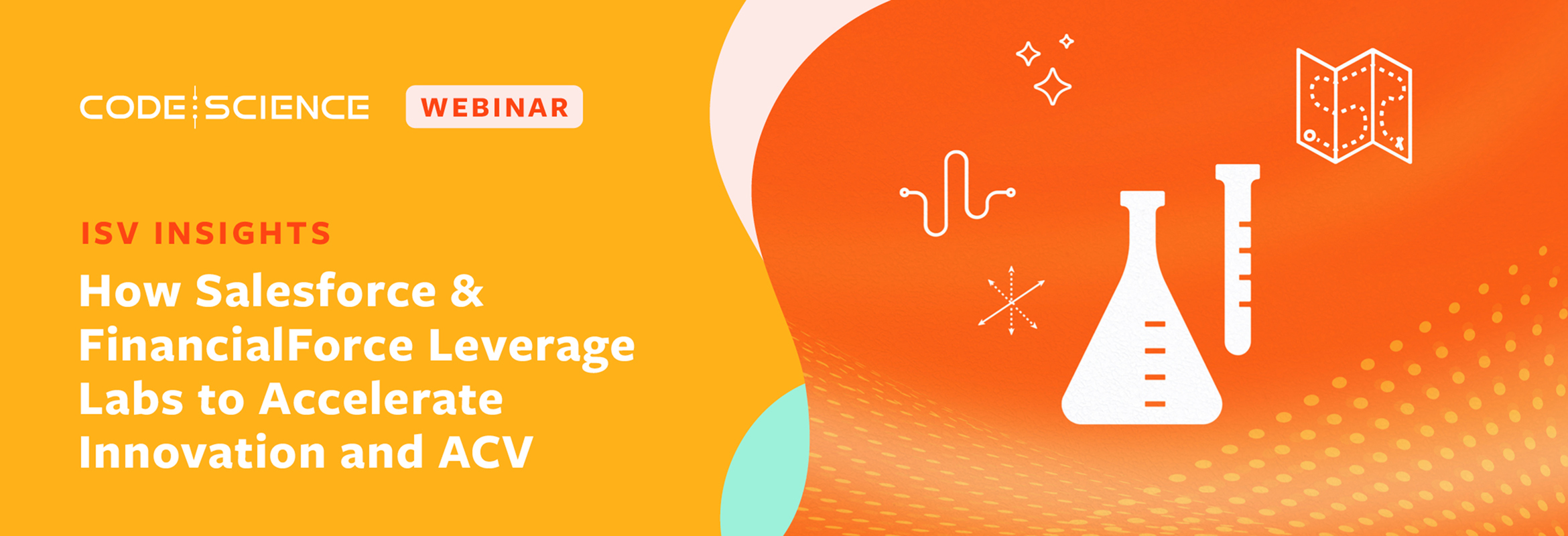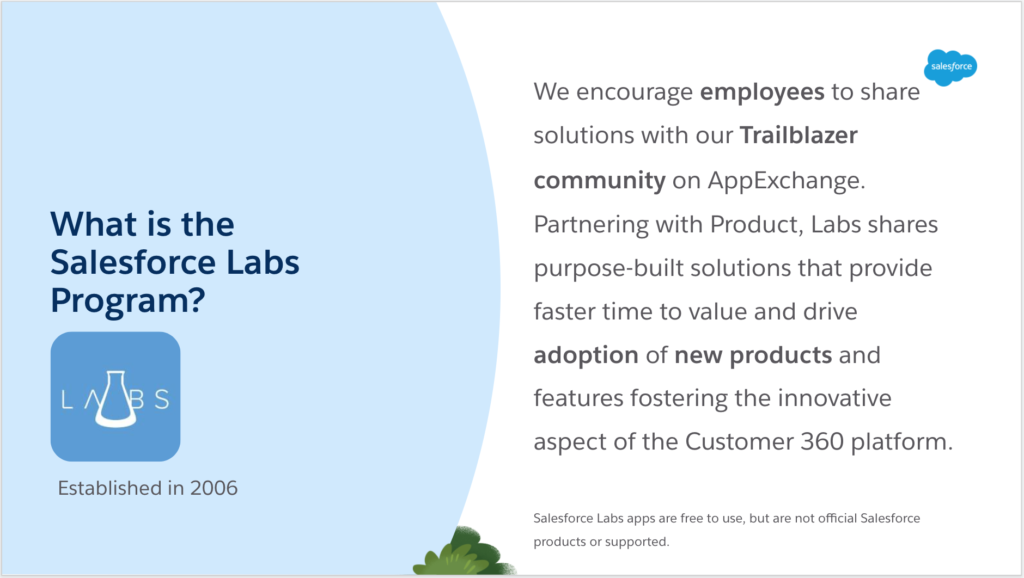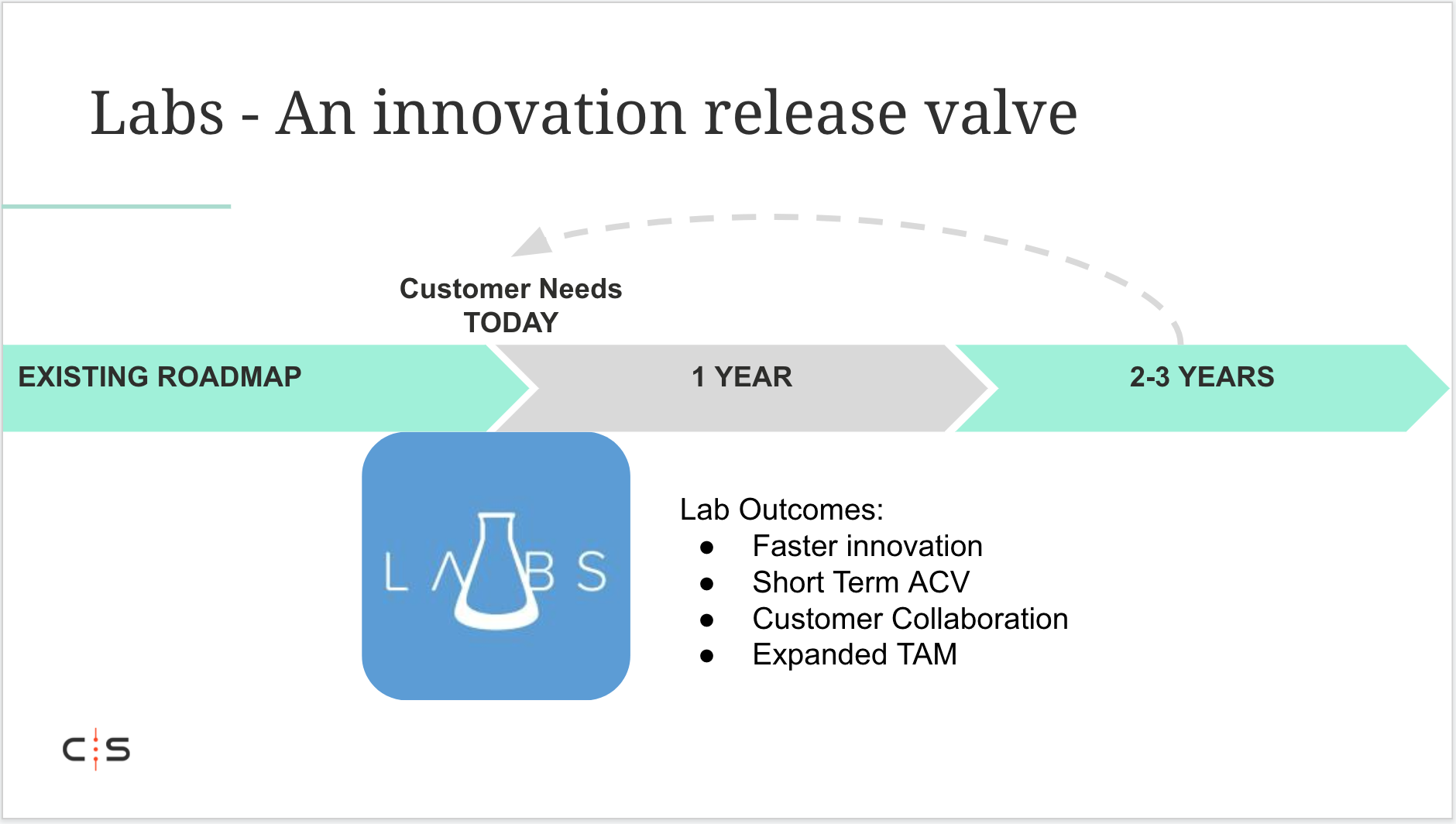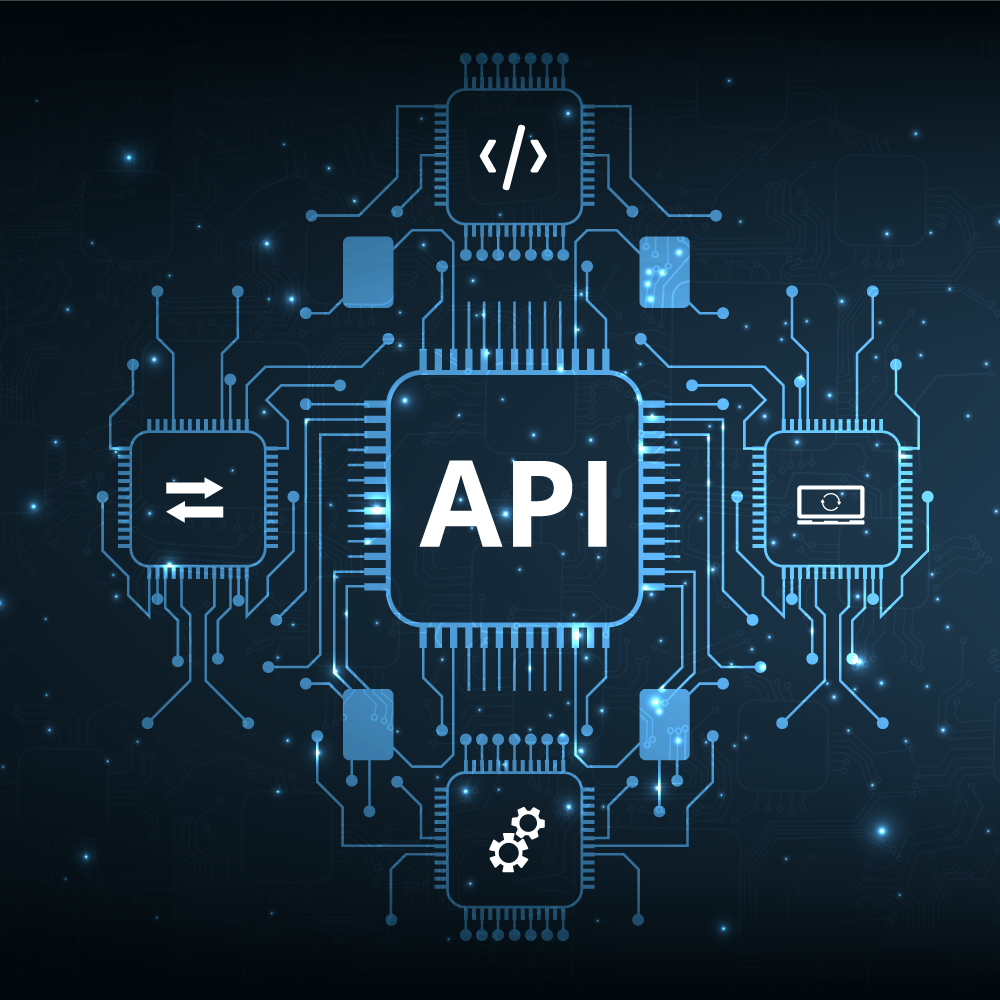
Developing a Labs program can be an effective R&D technique for Salesforce ISVs to accelerate innovation and capture ACV for a subset of their end customers without disrupting longer term product roadmaps.
In this webinar, CodeScience CRO, Sean Hogan, is joined by Stephen Willcock, Chief Architect of FinancialForce, to discuss how Stephen and team are leveraging Labs at FinancialForce. Sean and Stephen explain how CPOs, Product Managers, Sales leaders and Customer Success leaders can employ a Labs framework to address short term product development constraints.
What is Salesforce Labs?
Sean begins with an overview of Salesforce Labs, which was founded by Salesforce in 2006 to help their own employees and internal teams create rapid, purpose-built solutions “to get more innovation out to the community and let them play around with it.”

He highlights a key distinction that while Labs solutions are free to use, they are not official Salesforce products and are not supported. All Labs solutions, however, must still go through the same rigorous Security Review process as all other solutions on the AppExchange to maintain the high level of security and trust across the ecosystem.
Labs solutions are intended to provide quick and flexible solutions to problems customers are trying to solve. As Sean notes, Labs can “help to connect new functionality, new ideas, and new innovations that might evolve into more supported and formal products down the road.”
Since the Salesforce Labs program has been so successful at driving time to value and adoption of product features, Sean asks, “Why not Labs for ISVs?” He focuses on three core benefits ISVs can gain by starting a Labs program:
- Drive user adoption
- Prioritize innovation
- Enhance customer-partner collaboration
An “Innovation Release Valve”
Product managers by necessity must be committed to their product roadmap. Meanwhile, your sales team may find a net new subset of customers whose needs aren’t exactly a perfect fit with the current roadmap.
In these situations, Labs can be a conduit to help meet the needs of this subset of customers without disrupting the roadmap. As Sean explains, the goal is “to not only ideate on innovation ideas, but you might be able to capture short term ACV” as well as expanding Total Addressable Market (TAM).

Another way of looking at it: Labs can serve as an “innovation release valve between product, sales, and customers to incrementally iterate and improve the solution over a longer period of time.”
The evolution of Labs at FinancialForce
Stephen then explains exactly how the Labs program of FinancialForce came to be. The initiative started as a purely internal research team that would iterate quickly on new product features. The team differentiated themselves from the core product team by maintaining a laser focus on rapid development and innovation. The goal was “to do that small thing very fast and very efficiently,” he explains.
Stephen emphasizes that measuring, learning, and iterating have been central to the ongoing development of their Labs program. The original driver of the program was the company culture of customer-centricity; the Labs team wished to work even more closely with customers on what they wanted to see in the product. Thus, they focused on developing functionality they could quickly demonstrate to customers and get them to use early.
Creating a culture of experimentation
“I can’t emphasize enough the importance of the nature of the research team and the rules that constrained it being huge in actually being able to deliver Labs effectively,” Stephen notes. “We didn’t work like the product team, we were much leaner and able to move faster.”
This distinction between Labs and the core product team is critical to the Labs program’s success. He explains that, if they’d tried to “roll some of these things through the product team, they would have struggled to try to make the same kind of progress.”
Sean calls out a key lesson learned: “You also culturally enabled an environment where it was OK to experiment not like your traditional product team.” This was an insightful move. “If you hadn’t set that up, you would have gotten just a derivative team of your current product team.”
Points to consider when starting a Labs program
To close out the webinar, Sean & Stephen explore a few basic decision points ISVs should carefully consider when starting to develop Labs solutions, such as distribution options and end stage decisions. To help ISVs with these choices, they introduce a useful new resource — the Labs Decision Checklist — before diving into a thought-provoking Q&A session with the audience.
To hear more from Sean and Stephen and gain access to the Labs Decision Checklist as well as the full slide deck, register now to watch the webinar!
If your R&D team is struggling to keep pace with customer demand, or wants to explore a potential new market segment, CodeScience can help extend your capacity through our ISV Labs program. To learn more, contact us today!


